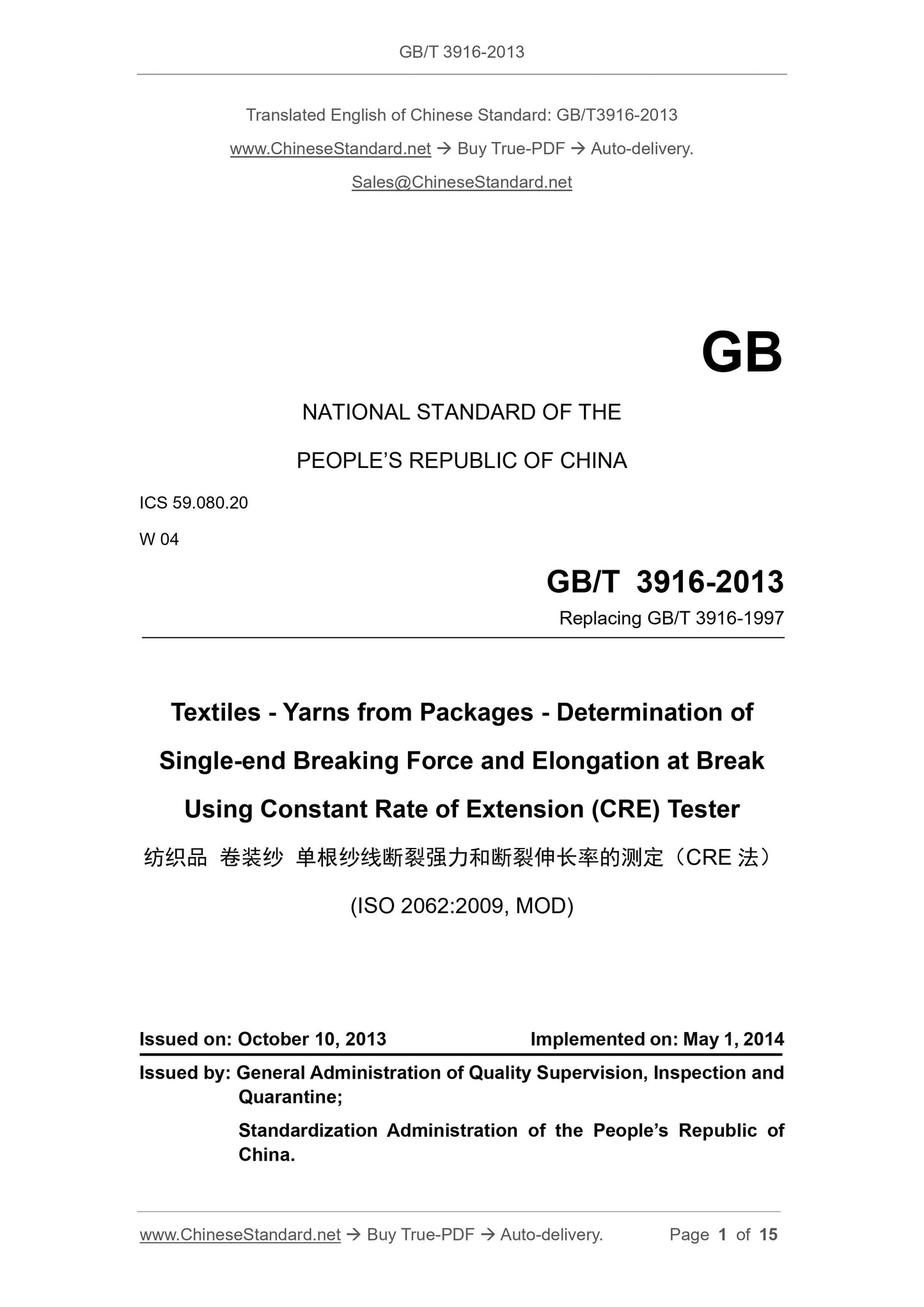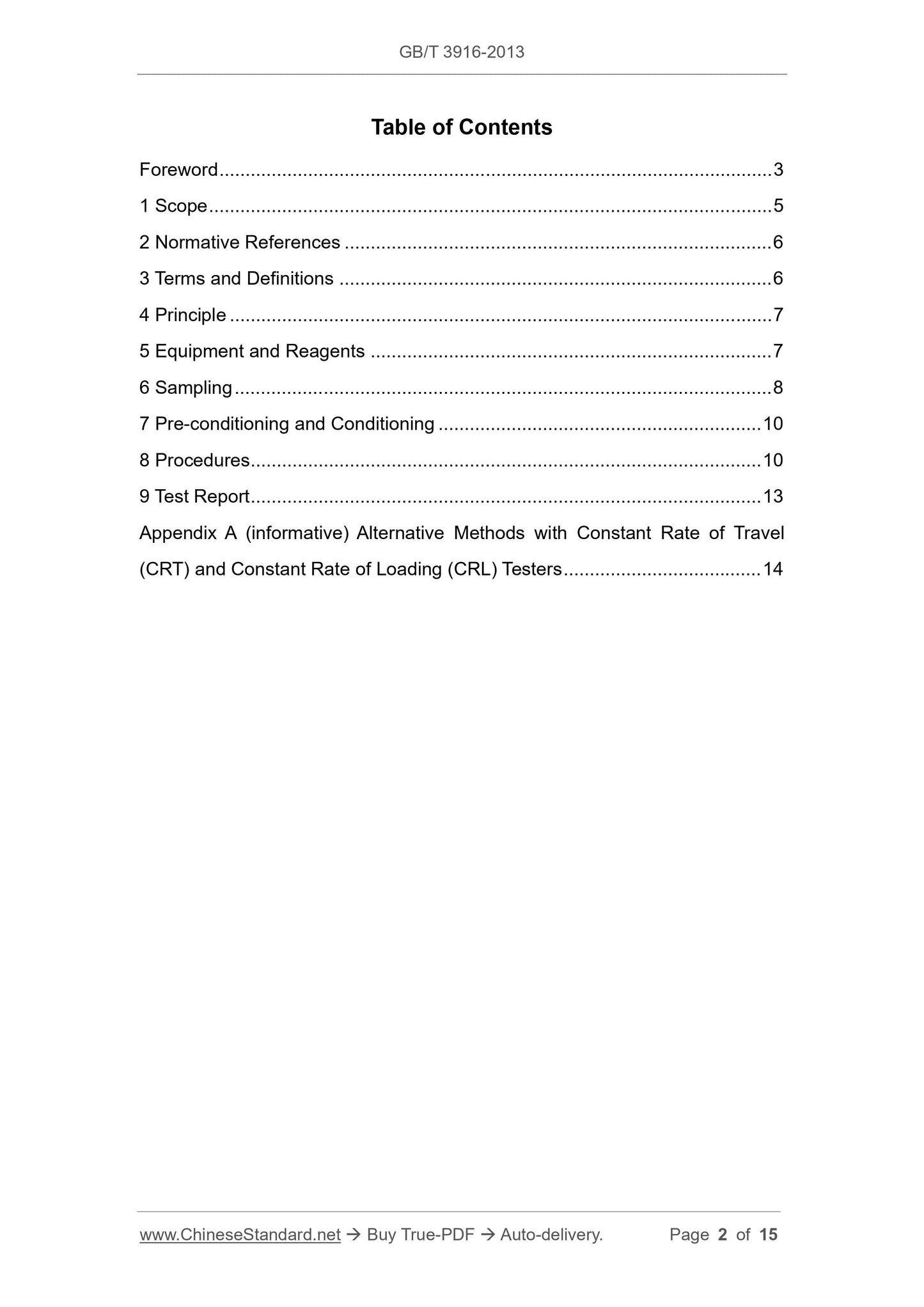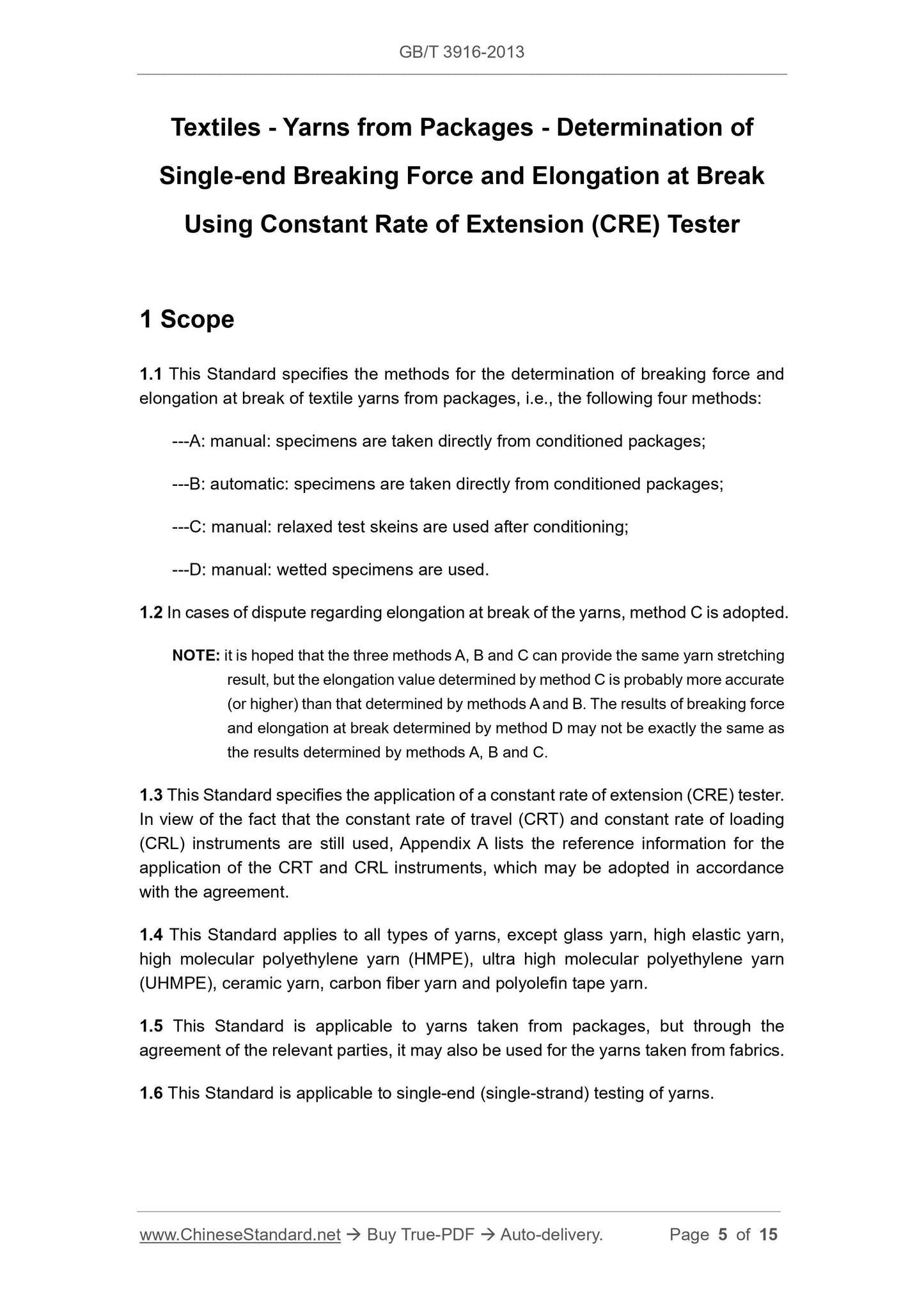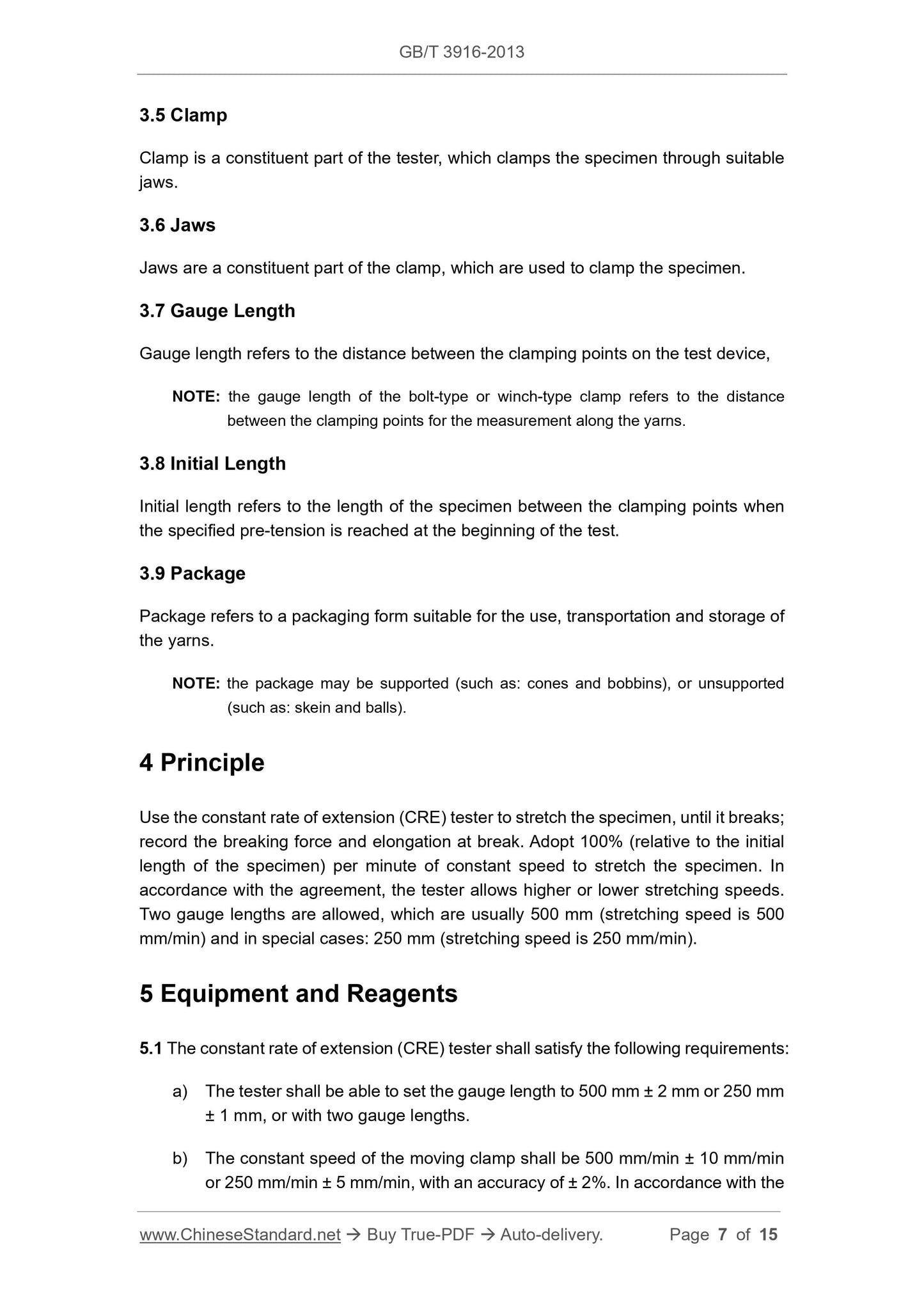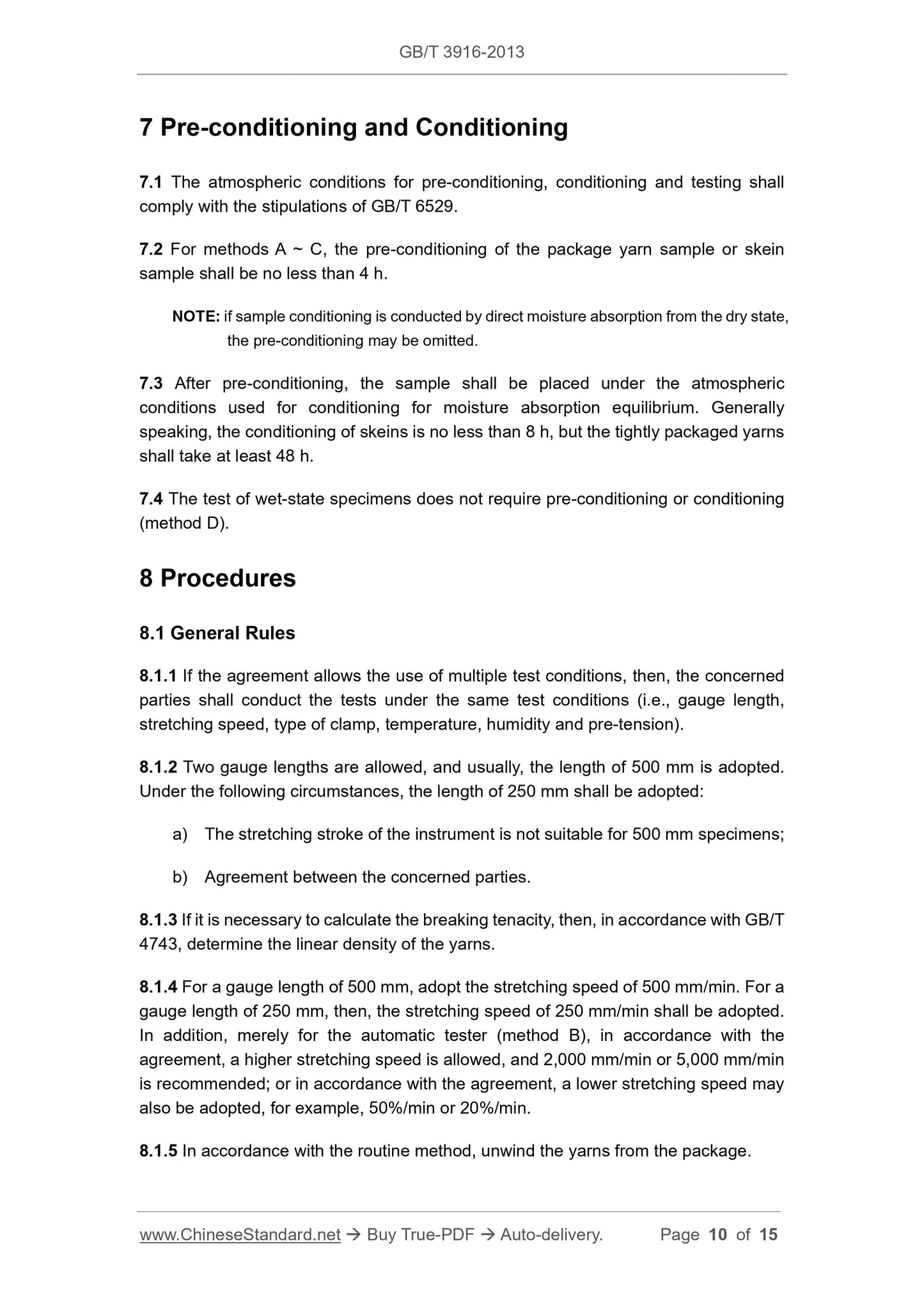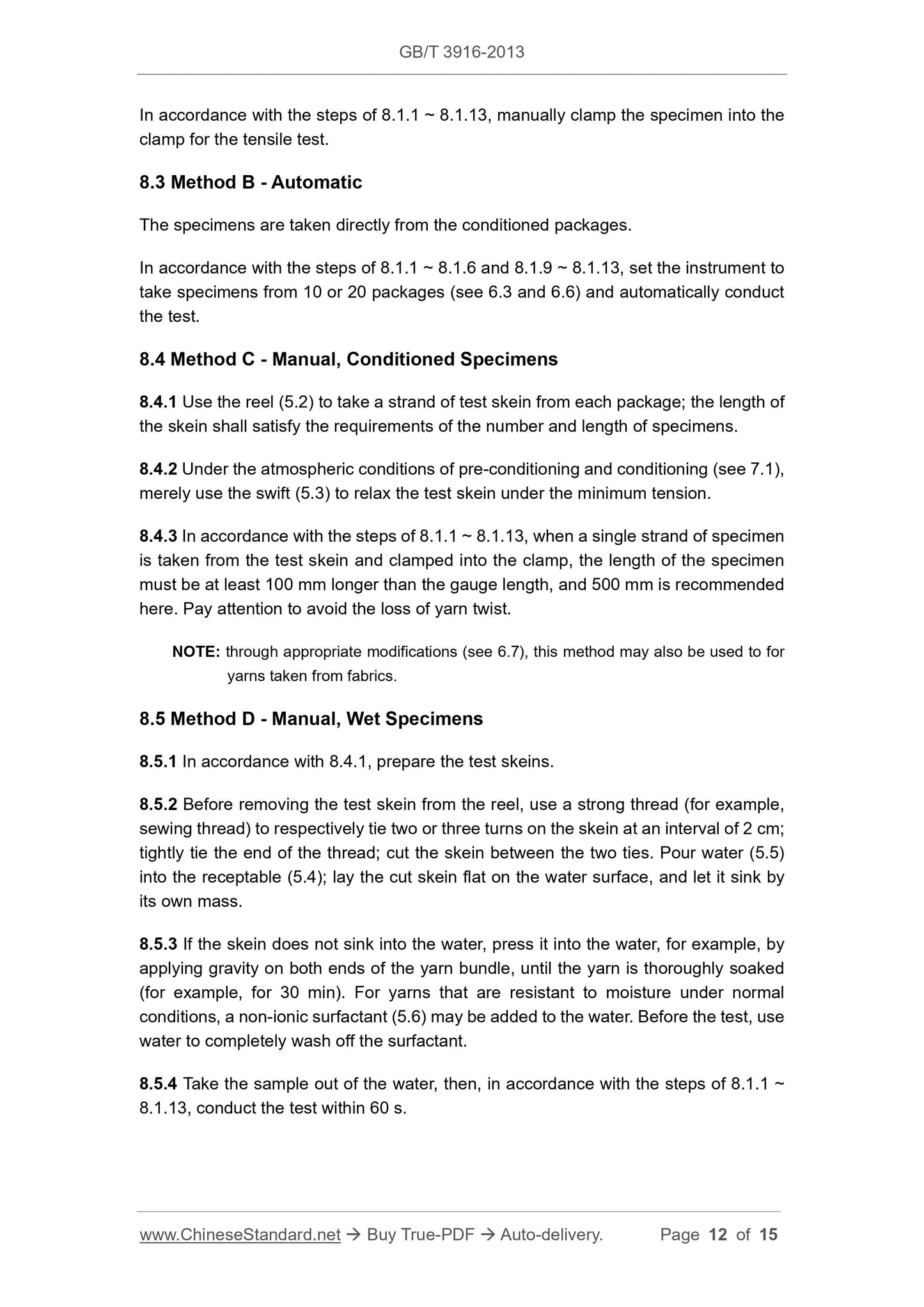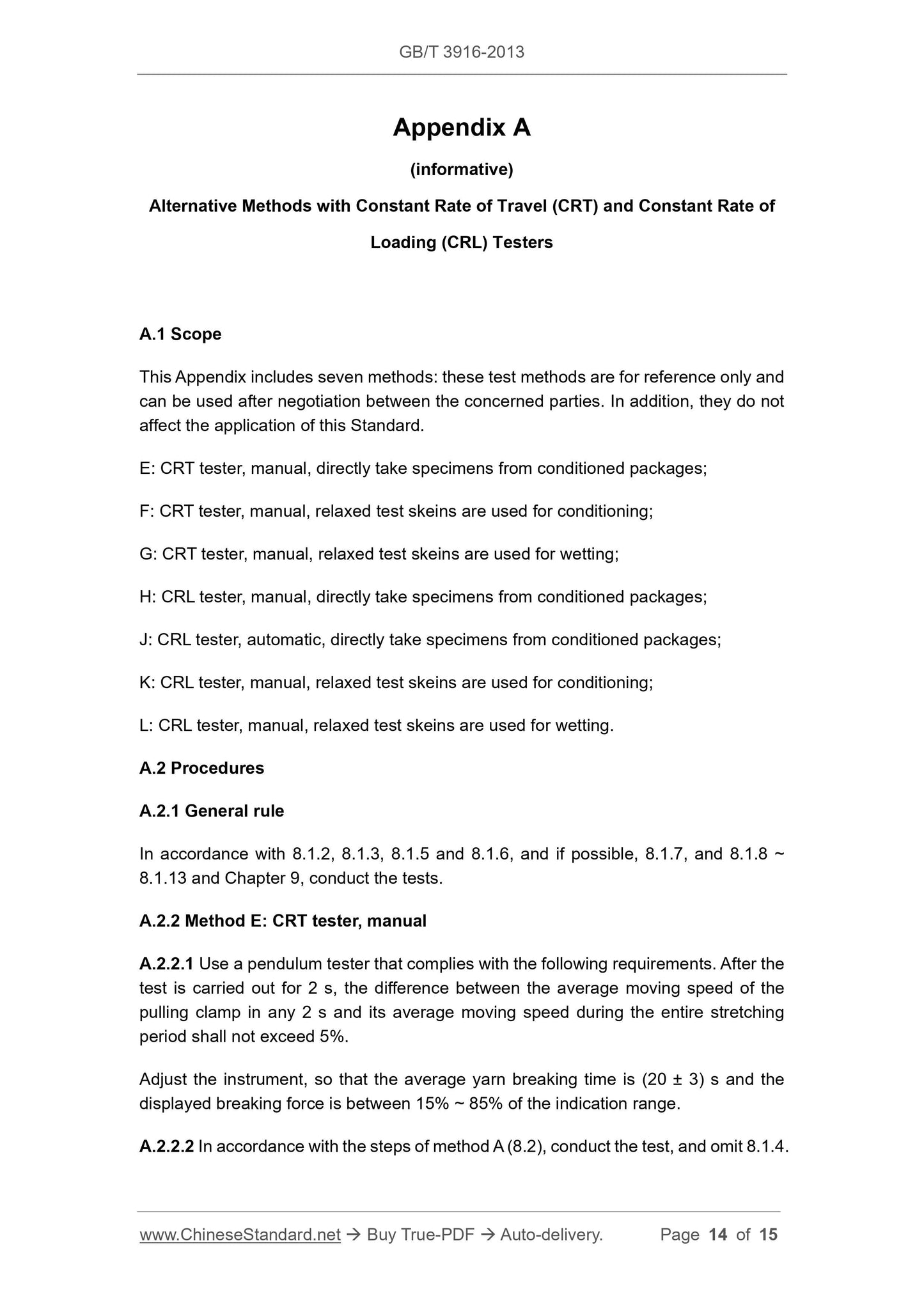1
/
of
7
www.ChineseStandard.us -- Field Test Asia Pte. Ltd.
GB/T 3916-2013 English PDF (GB/T3916-2013)
GB/T 3916-2013 English PDF (GB/T3916-2013)
Regular price
$155.00
Regular price
Sale price
$155.00
Unit price
/
per
Shipping calculated at checkout.
Couldn't load pickup availability
GB/T 3916-2013: Textiles -- Yarns from packages -- Determination of single-end breaking force and elongation at break using constant rate of extension (CRE) tester
Delivery: 9 seconds. Download (and Email) true-PDF + Invoice.Get Quotation: Click GB/T 3916-2013 (Self-service in 1-minute)
Newer / historical versions: GB/T 3916-2013
Preview True-PDF
Scope
1.1 This Standard specifies the methods for the determination of breaking force andelongation at break of textile yarns from packages, i.e., the following four methods:
---A: manual: specimens are taken directly from conditioned packages;
---B: automatic: specimens are taken directly from conditioned packages;
---C: manual: relaxed test skeins are used after conditioning;
---D: manual: wetted specimens are used.
1.2 In cases of dispute regarding elongation at break of the yarns, method C is adopted.
NOTE: it is hoped that the three methods A, B and C can provide the same yarn stretching
result, but the elongation value determined by method C is probably more accurate
(or higher) than that determined by methods A and B. The results of breaking force
and elongation at break determined by method D may not be exactly the same as
the results determined by methods A, B and C.
1.3 This Standard specifies the application of a constant rate of extension (CRE) tester.
In view of the fact that the constant rate of travel (CRT) and constant rate of loading
(CRL) instruments are still used, Appendix A lists the reference information for the
application of the CRT and CRL instruments, which may be adopted in accordance
with the agreement.
1.4 This Standard applies to all types of yarns, except glass yarn, high elastic yarn,
high molecular polyethylene yarn (HMPE), ultra high molecular polyethylene yarn
(UHMPE), ceramic yarn, carbon fiber yarn and polyolefin tape yarn.
1.5 This Standard is applicable to yarns taken from packages, but through the
agreement of the relevant parties, it may also be used for the yarns taken from fabrics.
1.6 This Standard is applicable to single-end (single-strand) testing of yarns.
3.5 Clamp
Clamp is a constituent part of the tester, which clamps the specimen through suitable
jaws.
3.6 Jaws
Jaws are a constituent part of the clamp, which are used to clamp the specimen.
3.7 Gauge Length
Gauge length refers to the distance between the clamping points on the test device,
NOTE: the gauge length of the bolt-type or winch-type clamp refers to the distance
between the clamping points for the measurement along the yarns.
3.8 Initial Length
Initial length refers to the length of the specimen between the clamping points when
the specified pre-tension is reached at the beginning of the test.
3.9 Package
Package refers to a packaging form suitable for the use, transportation and storage of
the yarns.
NOTE: the package may be supported (such as: cones and bobbins), or unsupported
(such as: skein and balls).
Basic Data
| Standard ID | GB/T 3916-2013 (GB/T3916-2013) |
| Description (Translated English) | Textiles -- Yarns from packages -- Determination of single-end breaking force and elongation at break using constant rate of extension (CRE) tester |
| Sector / Industry | National Standard (Recommended) |
| Classification of Chinese Standard | W04 |
| Classification of International Standard | 59.080.20 |
| Word Count Estimation | 11,154 |
| Older Standard (superseded by this standard) | GB/T 3916-1997 |
| Quoted Standard | GB/T 4743; GB/T 6529 |
| Adopted Standard | ISO 2062-2009; MOD |
| Regulation (derived from) | National Standards Bulletin No. 21 of 2013 |
| Issuing agency(ies) | General Administration of Quality Supervision, Inspection and Quarantine of the People's Republic of China, Standardization Administration of the People's Republic of China |
| Summary | This standard specifies: Retrieved roll Textile yarn breaking strength and elongation at break Determination, that provides four methods: A |
Share
